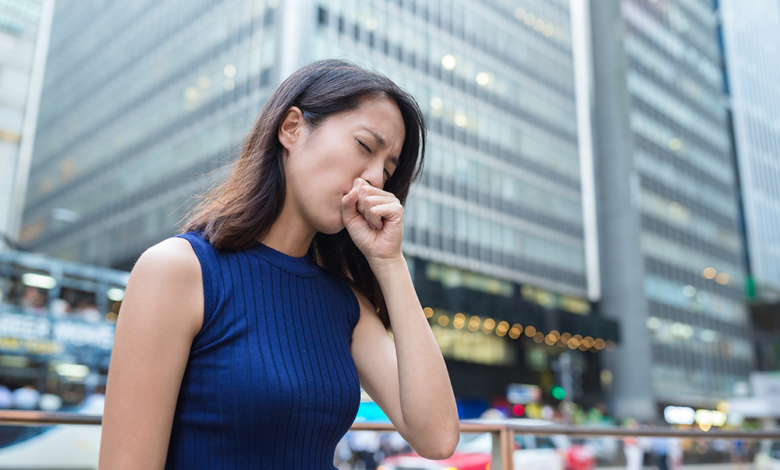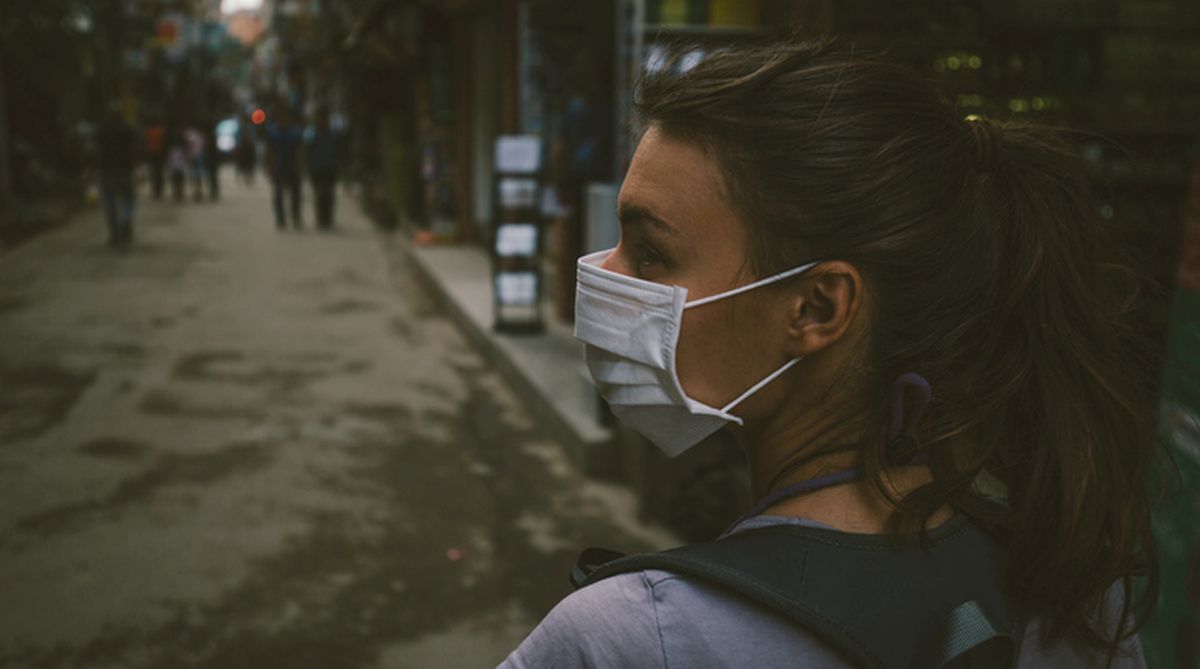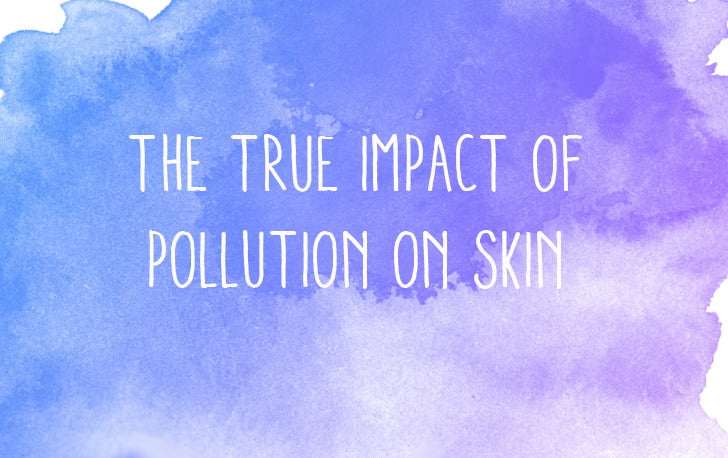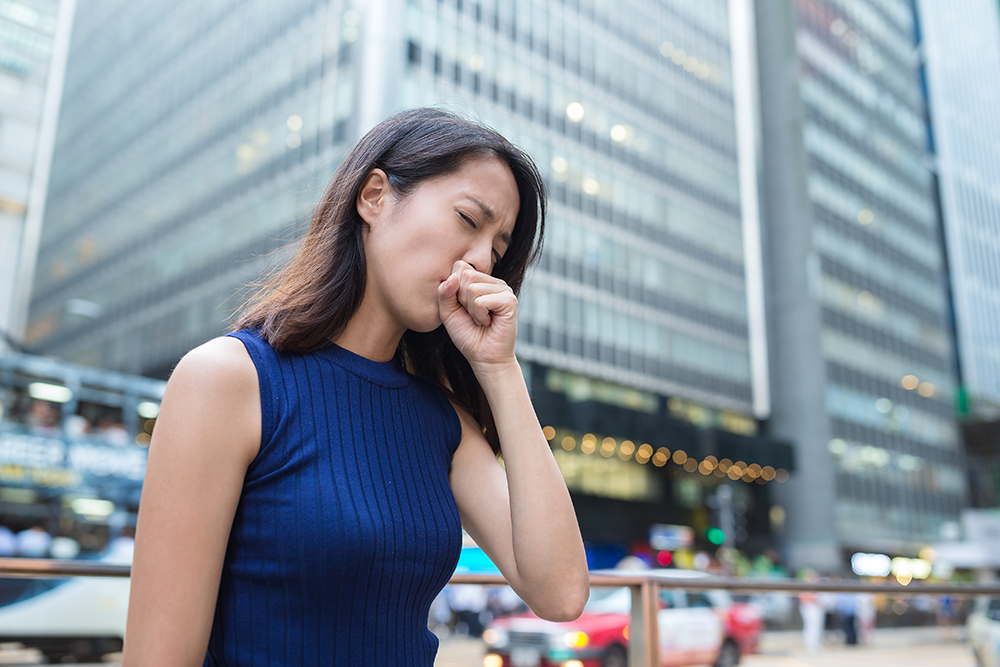
Can Air Pollution Really Harm Your Skin?
Can air pollution really harm your skin? Absolutely! We often think about the dangers of air pollution in terms of respiratory health, but the impact on our skin is often overlooked. From the microscopic damage to visible signs of aging, the pollutants in the air we breathe can significantly affect our complexion. This post delves into the science behind this often-ignored connection, exploring how different pollutants damage our skin, the visible and invisible effects, and most importantly, how we can protect ourselves.
We’ll explore the science behind how pollutants like particulate matter and ozone damage skin cells, accelerating aging and exacerbating existing conditions. We’ll also look at practical steps you can take to minimize the damage, from skincare routines to lifestyle changes. Get ready to discover how to safeguard your skin against the unseen enemy lurking in the air.
The Science Behind Air Pollution and Skin Damage
Air pollution, a pervasive environmental hazard, significantly impacts not only our respiratory and cardiovascular systems but also our skin. The skin, our largest organ, acts as a barrier against external threats, but prolonged exposure to airborne pollutants can compromise this defense, leading to a range of adverse effects. Understanding the mechanisms behind this damage is crucial for developing effective preventative measures and treatments.
Mechanisms of Air Pollutant-Induced Skin Damage
Air pollutants damage skin through various pathways. Many pollutants trigger oxidative stress, an imbalance between the production of reactive oxygen species (ROS) and the body’s ability to neutralize them. ROS damage cellular components, including lipids, proteins, and DNA, leading to inflammation, premature aging, and impaired skin barrier function. Furthermore, some pollutants directly irritate the skin, causing inflammation and exacerbating existing conditions.
The size and chemical composition of pollutants determine their penetration depth and the resulting damage. Smaller particles can penetrate deeper, causing more significant damage.
Specific Pollutants and Their Effects
Several key air pollutants directly impact skin health. Particulate matter (PM), particularly PM2.5 (particles smaller than 2.5 micrometers), is a major culprit. These tiny particles can penetrate deep into the skin, triggering inflammation and contributing to premature aging. Ozone, a component of smog, is a potent oxidant that damages skin cells and accelerates collagen breakdown, leading to wrinkles and loss of elasticity.
Nitrogen dioxide (NO2), a byproduct of combustion, also contributes to oxidative stress and inflammation. Sulfur dioxide (SO2), another gaseous pollutant, can cause skin irritation and exacerbate existing conditions.
So, can air pollution really harm your skin? Absolutely! Think about all the grime and toxins floating around. It’s crazy to think about, especially when you consider advancements like the fda approves clinical trials for pig kidney transplants in humans , which shows how we’re constantly striving for better health. But even with medical breakthroughs, protecting ourselves from everyday environmental damage like air pollution remains crucial for healthy skin.
Short-Term versus Long-Term Exposure
Short-term exposure to high levels of air pollution can lead to immediate reactions like skin irritation, redness, and dryness. Long-term exposure, however, has more profound consequences. Chronic inflammation caused by persistent exposure to pollutants accelerates the aging process, leading to premature wrinkles, age spots, and a dull complexion. It can also trigger or worsen skin conditions like acne, eczema, and rosacea.
For example, a study in a highly polluted city showed a significant increase in acne breakouts among young adults compared to those in less polluted areas.
Exacerbation of Pre-existing Skin Conditions
Air pollution significantly exacerbates several pre-existing skin conditions. Individuals with eczema, a condition characterized by inflammation and a compromised skin barrier, are particularly vulnerable. Air pollutants can trigger flare-ups, leading to increased itching, dryness, and redness. Similarly, rosacea, a chronic inflammatory skin condition, is worsened by air pollution, leading to increased flushing, redness, and papules (small bumps).
The inflammatory response triggered by pollutants exacerbates the underlying inflammation in these conditions.
Comparative Effects of Air Pollutants on Skin Types
| Pollutant | Sensitive Skin | Oily Skin | Dry Skin |
|---|---|---|---|
| Particulate Matter (PM2.5) | Increased inflammation, redness | Increased acne breakouts | Increased dryness, irritation |
| Ozone | Increased sensitivity, burning | Increased pore size, blemishes | Increased dryness, cracking |
| Nitrogen Dioxide (NO2) | Increased inflammation, itching | Increased sebum production | Increased dryness, dehydration |
| Sulfur Dioxide (SO2) | Increased irritation, redness | Increased breakouts | Increased dryness, scaling |
Visible Effects of Air Pollution on Skin
Air pollution’s impact on our skin isn’t just a theoretical concern; it’s a visible reality for many. The pollutants we breathe in daily interact with our skin, leading to a range of noticeable changes that can significantly affect our appearance and overall skin health. Understanding these visible effects is crucial for taking proactive steps towards protection and mitigation.
The most readily observable effects of air pollution on the skin are often linked to premature aging. Exposure to pollutants like particulate matter and ozone triggers inflammation in the skin, accelerating the breakdown of collagen and elastin – the proteins responsible for skin firmness and elasticity. This inflammatory response damages skin cells, leading to a cascade of effects that ultimately manifest as visible signs of aging.
Premature Aging and Wrinkles
Air pollution significantly contributes to premature aging, making skin look older than its chronological age. The oxidative stress caused by pollutants damages skin cells, leading to the formation of wrinkles and fine lines, particularly around the eyes and mouth. This process is accelerated by the sun’s UV rays, which often work synergistically with air pollution to exacerbate damage.
For instance, a study published in the Journal of Investigative Dermatology found a direct correlation between long-term exposure to air pollution and increased wrinkle formation. The increased inflammation leads to a breakdown of the skin’s support structure, resulting in sagging and loss of firmness.
Hyperpigmentation and Dark Spots, Can air pollution really harm your skin
Another prominent visible effect is hyperpigmentation, characterized by the appearance of dark spots or patches on the skin. Air pollutants can stimulate melanocytes, the cells responsible for producing melanin (the pigment that gives skin its color), leading to uneven skin tone and increased pigmentation. This is especially noticeable in individuals with already darker skin tones, who may experience more pronounced hyperpigmentation.
Imagine a close-up image: A woman’s cheek shows a noticeable cluster of dark brown spots, irregular in shape and size, contrasting sharply with her otherwise even-toned complexion. This uneven pigmentation is a direct result of prolonged exposure to polluted air.
Dryness and Dehydration
Air pollution can also strip the skin of its natural moisture, leading to dryness, roughness, and a dull complexion. Pollutants disrupt the skin’s barrier function, reducing its ability to retain hydration. This is particularly true for individuals living in urban areas with high levels of particulate matter. Picture a detailed image: A person’s hand shows visible dryness and scaling, with a lack of the usual healthy glow.
The skin appears tight and flaky, indicative of impaired barrier function and reduced hydration.
Vulnerable Skin Types
Individuals with sensitive skin, eczema, or rosacea are particularly vulnerable to the damaging effects of air pollution. Their skin’s already compromised barrier function makes them more susceptible to inflammation and irritation caused by pollutants. Those with naturally dry skin are also at increased risk of experiencing dryness and dehydration exacerbated by air pollution.
Minimizing Visible Signs of Air Pollution Damage
Protecting your skin from the visible effects of air pollution requires a multi-pronged approach.
It’s crucial to adopt a consistent skincare routine that includes the following steps:
- Thorough Cleansing: Wash your face twice daily with a gentle cleanser to remove pollutants and dirt that accumulate on the skin’s surface.
- Antioxidant Protection: Use skincare products containing antioxidants like vitamin C and vitamin E to combat oxidative stress caused by pollutants.
- Hydration: Keep your skin well-hydrated by using a moisturizer suited to your skin type. This helps to maintain the skin’s barrier function and prevent dryness.
- Sun Protection: Always apply sunscreen with a broad-spectrum SPF of 30 or higher to protect your skin from the sun’s harmful UV rays, which can exacerbate air pollution damage.
- Regular Exfoliation: Gently exfoliate your skin once or twice a week to remove dead skin cells and promote cell turnover.
- Limit Exposure: When possible, reduce your exposure to polluted air, especially during peak pollution hours.
Invisible Effects of Air Pollution on Skin

Source: thestatesman.com
Air pollution’s impact on our skin isn’t just about the visible blemishes and premature aging. A deeper understanding reveals a complex interplay of cellular and molecular changes that occur beneath the surface, silently contributing to long-term skin damage. These invisible effects, while not immediately apparent, are crucial to consider for comprehensive skin health.
Skin Barrier Dysfunction
Air pollutants disrupt the skin’s natural barrier function, a crucial defense mechanism against environmental stressors. This barrier, primarily composed of lipids and proteins, maintains hydration, prevents water loss, and protects against harmful substances. Exposure to pollutants like particulate matter (PM) and ozone can damage these components, leading to compromised barrier integrity. This weakened barrier results in increased transepidermal water loss (TEWL), dryness, sensitivity, and increased susceptibility to infections and irritations.
The compromised barrier also allows for deeper penetration of pollutants, exacerbating the damage.
Inflammation and Oxidative Stress
Air pollution triggers a significant inflammatory response in the skin. Pollutants induce the release of inflammatory mediators, such as cytokines and reactive oxygen species (ROS), leading to oxidative stress. This oxidative stress damages cellular components, including lipids, proteins, and DNA, accelerating the aging process and potentially contributing to skin conditions like eczema and acne. The persistent inflammation further weakens the skin barrier, creating a vicious cycle of damage and repair.
For example, studies have shown a correlation between high levels of PM2.5 exposure and increased inflammation markers in the skin.
Cellular and Molecular Changes
At the cellular level, air pollution induces various changes. Exposure to pollutants can lead to premature aging of skin cells (fibroblasts and keratinocytes), reducing collagen and elastin production. This results in decreased skin elasticity, wrinkles, and a loss of firmness. Furthermore, air pollution can impair the skin’s ability to repair itself, slowing down the healing process and making it more vulnerable to damage.
These molecular-level alterations are often subtle and difficult to detect in the early stages, but they cumulatively contribute to significant long-term skin damage.
Air Pollution vs. Sun Damage: A Comparison
While both air pollution and sun exposure cause significant skin damage, their mechanisms differ. Sun damage primarily involves UV radiation-induced DNA damage and inflammation, leading to sunburn, wrinkles, and an increased risk of skin cancer. Air pollution, on the other hand, causes a more complex cascade of events, involving oxidative stress, inflammation, and disruption of the skin barrier.
Both, however, share the common outcome of premature aging and increased risk of skin diseases. The effects are often synergistic; exposure to both air pollution and sun significantly increases the risk of severe skin damage compared to exposure to either alone.
Cascade of Events Leading to Air Pollution-Induced Skin Damage
The following flowchart illustrates the sequence of events:[Imagine a flowchart here. The top box would be “Air Pollution Exposure” leading to three branches: “Oxidative Stress,” “Inflammation,” and “Barrier Disruption.” Each of these branches then leads to “Cellular Damage” and finally to “Premature Aging,” “Skin Diseases,” and “Increased Sensitivity.”] The flowchart visually depicts how exposure to air pollutants initiates a chain reaction, ultimately leading to various forms of skin damage.
The process begins with the initial contact of pollutants with the skin, triggering oxidative stress, inflammation, and disruption of the skin’s protective barrier. These events, in turn, damage cells, leading to visible and invisible consequences such as premature aging, skin diseases, and increased sensitivity.
Protecting Your Skin from Air Pollution

Source: glowrecipe.com
Air pollution is an unavoidable reality for many of us, but its impact on our skin doesn’t have to be. Taking proactive steps to minimize exposure and bolster your skin’s defenses is crucial for maintaining a healthy complexion. This section explores practical strategies to protect your skin from the harmful effects of air pollution.
Reducing Exposure to Air Pollution
Minimizing your direct exposure to pollutants is the first line of defense. This involves making conscious choices throughout your day. For instance, avoiding peak traffic hours when pollution levels are typically highest can significantly reduce your exposure. Similarly, choosing routes with less traffic or more green spaces can make a difference. Staying indoors on days with high pollution alerts, as reported by local air quality monitoring agencies, is another effective measure.
Using air purifiers at home and in the office can create a cleaner breathing and living environment, thus minimizing the amount of pollutants your skin encounters.
Effective Cleansing Methods for Removing Pollutants
Thorough cleansing is paramount to remove pollutants that have settled on your skin’s surface. A gentle, double-cleansing method is particularly effective. This involves using an oil-based cleanser first to dissolve and lift away pollutants like dirt, oil, and makeup, followed by a water-based cleanser to remove any remaining residue. Look for cleansers formulated with ingredients known for their gentle yet effective cleansing properties, such as ceramides or hyaluronic acid.
So, can air pollution really harm your skin? Absolutely! Think of all those microscopic pollutants settling on your face. Managing environmental triggers is key, much like how parents learn effective strategies to manage Tourette syndrome in children , focusing on reducing stressors. Similarly, protecting your skin from air pollution requires a proactive approach, like using a good cleanser and sunscreen daily.
It’s all about creating a healthy environment, inside and out.
Avoid harsh scrubs or overly aggressive cleansing techniques, which can strip the skin of its natural oils and weaken its protective barrier. Remember to always rinse thoroughly with lukewarm water.
Utilizing Antioxidants and Protective Skincare Ingredients
Antioxidants play a vital role in neutralizing free radicals generated by air pollution, preventing cellular damage. Ingredients like vitamin C, vitamin E, and green tea extract are potent antioxidants that can be incorporated into your skincare routine through serums, moisturizers, or masks. Niacinamide is another beneficial ingredient, known for its ability to strengthen the skin barrier and reduce inflammation, which are often exacerbated by air pollution.
Ceramides, naturally occurring lipids in the skin, help maintain the skin’s barrier function, preventing pollutants from penetrating deeper layers. Choosing products containing these ingredients can significantly enhance your skin’s resilience against environmental aggressors.
The Role of Diet and Lifestyle in Maintaining Skin Health
A healthy diet and lifestyle contribute significantly to skin health, particularly in polluted environments. A diet rich in fruits, vegetables, and antioxidants provides the necessary nutrients for skin repair and protection. Staying well-hydrated is equally crucial, as adequate water intake supports skin elasticity and helps flush out toxins. Getting enough sleep allows your skin to repair itself overnight, while managing stress levels reduces inflammation.
Regular exercise improves blood circulation, delivering essential nutrients to the skin and promoting a healthy glow.
Tailored Skincare Routines for Varying Pollution Levels
Adapting your skincare routine to the level of air pollution is essential. On days with low pollution, a basic routine of cleansing, toning, and moisturizing may suffice. However, on high-pollution days, consider incorporating extra steps such as double cleansing, using a hydrating mask to soothe and replenish the skin, and applying a protective serum containing antioxidants. For individuals living in consistently high-pollution areas, incorporating a daily use of a strong antioxidant serum and a barrier-supporting moisturizer might be beneficial.
Regular exfoliation (1-2 times a week) can also help remove accumulated pollutants, but be mindful to avoid over-exfoliation.
Air Pollution and Skin Conditions
Air pollution’s impact extends far beyond respiratory issues; it significantly affects skin health, exacerbating existing conditions and even triggering new ones. The tiny particulate matter and gaseous pollutants in the air penetrate the skin’s protective barrier, leading to inflammation and a cascade of negative effects. This section explores the specific links between air pollution and various skin conditions, highlighting how environmental factors further complicate the issue.
Acne Vulgaris and Air Pollution
Air pollution’s contribution to acne is multifaceted. Pollutants like particulate matter can clog pores, leading to increased sebum production and inflammation. This, combined with the oxidative stress induced by pollutants, triggers an inflammatory response within the skin, worsening existing acne and potentially causing new breakouts. Furthermore, exposure to ozone and nitrogen dioxide can damage the skin’s barrier function, making it more susceptible to bacterial colonization and inflammation, key factors in acne development.
Exposure to air pollutants increases oxidative stress and inflammation in the skin, directly contributing to acne development and severity.
Psoriasis and Air Pollution
Psoriasis, a chronic inflammatory skin disease, is also negatively impacted by air pollution. Studies suggest that exposure to particulate matter and other air pollutants can worsen psoriasis symptoms, leading to increased inflammation, scaling, and itching. The pollutants can trigger an immune response in susceptible individuals, leading to an exacerbation of the disease’s underlying inflammatory process. This is likely due to the pollutants’ ability to penetrate the skin and interact with immune cells, further stimulating the inflammatory cascade characteristic of psoriasis.
Air pollution can trigger or exacerbate psoriasis through its pro-inflammatory effects and its ability to disrupt the skin barrier, leading to increased symptoms.
Eczema and Air Pollution
Individuals with eczema, or atopic dermatitis, are particularly vulnerable to the harmful effects of air pollution. The already compromised skin barrier in eczema patients is further damaged by pollutants, leading to increased dryness, itching, and inflammation. Air pollution’s oxidative stress also plays a crucial role, intensifying the inflammatory response and making the skin more susceptible to allergens and irritants.
So, you’re wondering if air pollution really messes with your skin? It totally can! Think about all those nasty particles irritating your pores. It’s fascinating how subtle health issues connect; for instance, research is exploring if a simple eye test, as discussed in this article can eye test detect dementia risk in older adults , could predict dementia risk.
Just like eye health, skin health is also impacted by environmental factors, making clean air crucial for both.
This can result in more frequent and severe eczema flare-ups.
The compromised skin barrier in eczema makes individuals more susceptible to the damaging effects of air pollution, leading to increased inflammation and exacerbation of symptoms.
Treatment Effectiveness and Environmental Interactions
The effectiveness of treatments for skin conditions exacerbated by air pollution varies. While topical treatments like corticosteroids and retinoids can manage inflammation and reduce symptoms, their effectiveness is often limited when continuous exposure to pollutants persists. Lifestyle modifications, such as reducing exposure to air pollution and incorporating antioxidants into the diet, can play a significant role in supporting skin health and mitigating the effects of air pollution.Environmental factors like humidity and UV radiation interact with air pollution to further affect skin health.
High humidity can trap pollutants closer to the skin, increasing exposure, while UV radiation can exacerbate the oxidative stress induced by pollutants, leading to increased skin damage. For instance, living in an urban area with high levels of air pollution and simultaneously experiencing intense sun exposure can significantly worsen acne, psoriasis, and eczema symptoms. This highlights the importance of a holistic approach to skincare that considers both air quality and other environmental factors.
Closing Summary: Can Air Pollution Really Harm Your Skin

Source: drdennisgross.com
So, the next time you step outside, remember that the air you breathe can directly impact your skin’s health. While we can’t completely eliminate air pollution from our lives, we can take proactive steps to mitigate its effects. By understanding the science behind the damage and incorporating protective measures into our daily routines, we can significantly reduce the negative impact of air pollution on our skin and maintain a healthy, radiant complexion.
Protecting your skin from air pollution isn’t just about vanity; it’s about overall well-being.
Question Bank
Does wearing sunscreen protect against air pollution damage?
While sunscreen primarily protects against sun damage, it can offer some indirect protection against air pollution. It creates a barrier on the skin, which may help reduce the absorption of some pollutants.
Can I wash away all the pollution from my skin?
Thorough cleansing can remove some surface pollutants, but deep-seated damage requires a more holistic approach involving lifestyle changes and skincare.
Are there specific foods that help protect my skin from air pollution?
A diet rich in antioxidants (found in fruits and vegetables) can help combat the oxidative stress caused by air pollution. Foods high in Vitamin C and E are particularly beneficial.
How often should I change my pillowcase to minimize pollution exposure?
Changing your pillowcase frequently (ideally every 2-3 days) helps reduce the accumulation of pollutants that can transfer to your skin overnight.
